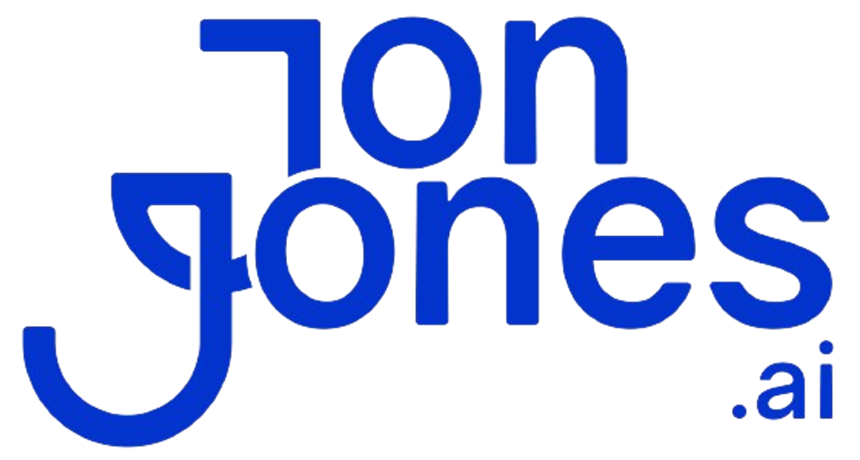Ever felt your big launch crash despite months of prep? We get it – it’s like watching plans fall apart in real time.
A go-to-market strategy framework (GTM for short) is your launch roadmap. It lays out your messaging, pricing, channels, promotions, and sales tools.
Think of it like planning a road trip. You choose your route. Pack snacks. Check your car before you hit the highway.
In this guide, we’ll walk you through five core steps. You’ll launch faster, cut risk, and give your team a clear path to revenue. Nice.
No more guesswork. Get ready to watch your next rollout hum.
Understanding a Go-to-Market Strategy Framework

A go-to-market (GTM) strategy framework maps out how you’ll launch a product or service. It covers your messaging, pricing, promotions, and distribution. Think of it like planning a road trip, you pick the route, pack snacks, check the car, and then hit the highway.
You’ll use a GTM framework when you introduce a new product, enter a fresh market, reshape your brand story, or boost sales of something you already sell. Unlike a general marketing plan, which keeps your engine running day to day, a GTM framework zooms in on launch prep. That focus helps you dodge wasted time and budget.
Next, we sync cross-functional teams around five core elements:
- Product messaging: nail down key talking points.
- Pricing models: decide what you’ll charge and why.
- Channel selection: choose where you’ll sell.
- Promotional tactics: plan how you’ll spread the word.
- Sales support materials: arm your reps with the right tools.
Here’s how it typically plays out: product managers test the main assumptions, marketers draft launch campaigns, sales teams refine their outreach scripts, and data analysts feed real-time customer insights back into the process. That teamwork slashes your time-to-market and flags gaps before you spend a single dollar.
Why you’ll love a GTM framework:
- Faster rollouts
- Lower financial risk
- Smoother customer experiences
- Clear roles for everyone
- A step-by-step growth roadmap
By mapping each step, from defining your ideal customer profile to building a content calendar and training reps, you turn launch day from chaotic to predictable. Teams move from firefighting to fine-tuning, and leadership can track progress against clear milestones.
Key GTM checklist:
- Target market definition
- Unique value proposition
- Pricing and packaging
- Channel distribution plan
- Promotional tactics
- Sales enablement assets
- Customer intelligence loop
- Launch timeline
5 Go-to-Market Strategy Framework: Steps for Swift Success

Organizing your go-to-market (GTM) strategy around a clear framework keeps your team aligned and moves you from plan to launch faster. Think of it like a roadmap, you know where you’re going and how you’ll get there.
| Model | Core Structure | Ideal Stage |
|---|---|---|
| McKinsey’s 7-Element GTM model | Market analysis, product, pricing, channels, messaging, enablement, metrics | Enterprise planning |
| BCG market entry model | Market attractiveness, competitive position, entry strategy, risk assessment | Large-scale launches |
| Lean Startup launch model | Build-measure-learn loops with MVP tests | Early-stage validation |
| Agile GTM methodology | Sprints, iterative testing, cross-team standups | Fast feedback loops |
| Digital GTM framework | SEO, content, automation, analytics | Online-first products |
Enterprises often lean on McKinsey’s 7-Element model or the BCG (Boston Consulting Group) market entry framework to nail down customer insights, pricing tiers, channel mix, and performance metrics. Small teams usually start with a lean startup approach (an iterative way to test ideas quickly) and spin through build-measure-learn loops in short sprints. Then agile GTM brings everybody together, sales, marketing, product, for rapid feedback. And if you’re online-first, the digital GTM framework focuses on SEO, social ads, automated workflows, and real-time analytics.
Here’s a quick rundown of simpler models you might know:
- 3Cs: company strengths, customer needs, competitors
- STP (Segmentation, Targeting, Positioning): hone in on your best-fit segments
- 4Ps (Product, Price, Place, Promotion): cover your launch’s must-haves
These bite-sized frameworks work great for testing an MVP (minimum viable product). As you grow, you can layer in the full BCG or McKinsey model for enterprise-grade planning.
Use this chart as your cheat sheet to pick the right fit. If you need deep market analysis and cross-functional playbooks, aim for the 7-Element or BCG models. Got tight budgets or unproven ideas? Lean into the lean startup or agile approach to cut risk. And if you’re selling subscriptions or digital services, the digital GTM framework lets you refine targeting on the fly.
Step-by-Step Implementation of a Go-to-Market Strategy

Let’s break down your go-to-market (GTM) strategy into clear phases. We’ll guide you through each step so you avoid any guesswork.
Phase 1: Define Your Market
- Slice your market by industry, company size, and core pain points.
- Map customer profiles and buying habits.
Phase 2: Choose Channels
- Decide between self-service, inside sales calls, field reps, or partner networks.
- See which route resonates most with your buyers.
Phase 3: Shape Your Message
- Write product messaging that speaks to real problems.
- Show why you’re the smarter, faster choice.
Phase 4: Plan Your Launch Timeline
- Mark key milestones and link them to each other.
- You’ll know exactly when to hit “go.”
Phase 5: Build a Content Bank
- Stock up on blog posts, email templates, and ad copy.
- Think of it as your marketing toolkit ready at a moment’s notice.
Phase 6: Arm Your Sales Team
- Create simple playbooks and quick training modules.
- Give reps everything they need to close deals confidently.
Now, let’s keep ourselves honest with five key questions:
- Which channels drive the most conversions?
- Does our messaging land with each segment?
- How should we shift budget to boost social or search ROI?
- What’s our lead-qualification process before sales?
- How often should we sync up to stay aligned?
Nice. Next, we guide your sales team in three stages:
- Initiation: You lead founder-led sales to gather early intel.
- Transition: We hire your first reps and nail down outreach steps.
- Execution: Scale teams and watch your customer acquisition cost (CAC) shrink. (CAC is the average cost to win one customer.)
Then we kick off a small pilot launch.
- Run mini promotions or A/B email tests (sending two email versions to see which wins).
- Host a cross-functional workshop (marketing, sales, product, ops working together).
This test run lets us tweak messaging, timing, and channels before the big debut.
Finally, we set up weekly standups and hands-on workshops to keep everyone synced.
Results matter. Launch day becomes a smooth, high-energy push instead of a last-minute scramble.
Defining Your Target Audience and Segmentation in GTM Strategy

Let’s break it down: in a B2B (business-to-business) deal, you often have about seven people involved. You’ve got the person who kicks things off, the folks who actually use your product, the influencer, the decision maker, the buyer, the approver, and sometimes a gatekeeper who holds the keys.
Step one is mapping each role’s top goals and pain points. That way, our messaging hits home whether we’re talking to finance, the day-to-day user, or the legal team.
Next, we slice the market into segments based on demographics (like location), firmographics (company details like size and revenue), and behavioral traits (such as how and when they buy). Your segmentation criteria might include:
- Industry sector or niche
- Company size, annual revenue, headcount
- Length of the buying cycle and budget authority
- Main challenges or strategic objectives
Now, let’s build personas. We grab data from interviews, support tickets, surveys, and CRM (customer relationship management) records. Then we sketch out each persona’s daily hurdles, what triggers their “Yes!”, and where they look for info. We update these personas regularly. You know, your ICP (ideal customer profile) changes as you learn from real-world behavior.
Finally, we map the customer journey into three clear stages:
- Awareness (top of funnel): publish how-to blog posts
- Consideration (middle): host webinars and share case studies
- Decision (bottom): hand off to sales for tailored demos and proposals
This stage-by-stage approach keeps marketing and sales running like a well-oiled machine. Got it.
Crafting Value Proposition and Positioning for Your Go-to-Market Strategy

Start with a value matrix that links each persona’s biggest pain point to a clear product benefit and matching message. For example, if your finance lead worries about cost overruns, you’ll show how our solution caps expenses in real time. That way you speak their language and hit the pain directly.
Next, build a simple positioning statement using this formula:
- For [target persona]
- Who needs [primary outcome]
- Our product is a [category]
- That delivers [key benefit]
- Unlike [competitor], we [unique difference]
This structure keeps your story tight so everyone instantly sees why you stand out.
Then, craft your brand messaging around solving real problems instead of listing features. Talk about “cutting monthly billing by 20%” instead of “includes automated invoicing.” You’ll focus on the wins that matter most to your customers.
Now it’s time to test. Run small ad sets or email variations on LinkedIn, Facebook, and Google Ads. Track which lines get the highest click rates. Then shift budget to the top performers. Nice.
When you target a shortlist of big accounts, layer in account-based marketing (ABM) tactics. Send personalized case studies. Host custom demos. Drop in a video that calls out their exact use case. Those one-to-one touches show you’ve done your homework and make your GTM launch feel truly custom.
Channel Selection and Sales Enablement in GTM Strategy

Choose between direct distribution planning, self-service portals, inside sales calls, or field reps, and channel partner strategy with resellers or affiliates. Direct sales tactics give you tighter control and clear sales pipeline design, while indirect networks boost reach without adding headcount.
Inbound demand generation leans on SEO, content marketing, and social media. Outbound demand uses cold outreach, event sponsorships, and warm email sequences. Blending both fills your funnel and keeps lead flow steady.
- Self-service: low friction for low-price products, simple funnel.
- Inside sales: moderate-ticket deals, phone/email outreach, mid-length cycle.
- Field sales: high-touch demos, long cycle, complex contracts.
- Channel sales: partner network, revenue share deals, extended coverage.
Sales enablement tactics include collateral libraries, playbooks, and bite-sized training modules to keep reps and partners on message. A strong partner onboarding process covers product specs, pricing tiers, and key talking points in days, not weeks, so new resellers close deals faster.
Channel partner strategy isn’t plug-and-play. You need partner segmentation, revenue-share agreements, and co-branded assets. Quarterly enablement webinars and a dedicated partner success manager drive engagement, reduce churn, and align goals.
Optimizing channel mix optimization means balancing cost per acquisition against sales velocity and control. Shift budget toward your top converters to cut acquisition overhead. Use customer acquisition strategy benchmarks to track cost-per-acquisition alongside conversion metrics.
Marketing-sales alignment happens through shared dashboards, weekly standups, and crystal-clear lead-scoring rules. When both teams follow the same pipeline playbook, leads move smoothly from SQL to closed-won.
Pricing Models and Marketing Mix Optimization for GTM Strategy

Pricing sits where your customer’s value meets your revenue goals. We can go with flat pricing, tiered plans bundling features, usage-based billing that charges by activity, or a freemium model letting people try core features before they upgrade. Pick what lines up with your buyers’ budgets and needs.
In the early days, your customer acquisition cost (CAC) might feel steep while you test your market. Once you hit product-market fit (when customers buy and love what you’re selling), renewal costs fall to about $0.13 per customer and upsell costs average $0.28. Watching CAC drop over time helps you set realistic payback periods and hit profitability targets.
| Metric | Cost per Customer |
|---|---|
| Renewals after Product-Market Fit | $0.13 |
| Upsells | $0.28 |
Clear discount rules protect your margins. Define when you’ll offer volume or time-limited discounts and test each promo’s revenue impact. Don’t hand out open-ended price cuts that water down your value. Tie every discount to a goal, faster onboarding, bigger deals, so your cash flow stays steady.
Integrating pricing into your marketing mix keeps everything in sync. Align price, product, place, and promotion by:
- Offering partner spiffs on your top tier
- Bundling add-ons in launch campaigns
- Running A/B tests on price or feature combos to see what drives lifetime value
That balance between price, product, place, and promotion is how you get your channels working together, and your GTM strategy firing on all cylinders.
Launch Readiness Checklist and Roadmap for Go-to-Market Strategy

We’ve pulled everything into one table so you can see who owns what, when, and what you need to hit each step.
| Milestone | Timeline | Owner | Dependencies |
|---|---|---|---|
| Market validation | Day –10 to 0 | Product Lead | Survey drafts, pilot feedback |
| Buyer persona confirmation | Day –5 to 0 | Marketing | Survey insights |
| Messaging approval | Day 0 to 5 | Brand Manager | Creative drafts |
| Channel selection | Day 3 to 7 | Growth Lead | Persona profile |
| Pricing review | Day 5 to 9 | Finance Lead | Tier models |
| Enablement content ready | Day 7 to 10 | Sales Enablement | Final deck, playbook outline |
| Legal & security sign-off | Day 8 to 11 | Legal Counsel | Compliance checklist |
| Executive approval | Day 10 to 12 | CEO & CFO | Full readiness report |
| Launch readiness review | Day 12 | Steering Committee | All above |
Resources & Templates
Next, you’ll lean on these tools:
- Phased launch roadmap template: map your milestones, owners, and dependencies.
- Risk mitigation checklist: flag legal, security, and exec sign-offs.
- Milestone tracking spreadsheet: track progress from Day –10 to Day 12.
- Communication plan outline: who you’ll update, when, and how.
- Budget tracking template: compare actual spend vs. forecast spend.
Measuring, Optimizing, and Reviewing Your Go-to-Market Strategy

When we kick off your launch, we pick a few key performance indicators (KPIs) to track. You’ll focus on:
- Conversion rate (leads turning into paying customers)
- Sales volume (total deals closed)
- Pipeline velocity (deal value ÷ days in sales cycle)
- Sales cycle length (average days to close)
- Customer Acquisition Cost (CAC) (marketing + sales spend ÷ new customers)
Watch CAC drop over time, it’s proof your tweaks are working. Then add retention rate and upsell rate to keep your customer success team on point.
Next, let’s light up a live KPI dashboard so your team sees real-time results. This shared view becomes our single source of truth, from launch week onward:
| KPI | Definition | Target |
|---|---|---|
| Conversion rate | Leads to paying customers | 10% |
| Pipeline velocity | Deal value ÷ sales cycle days | $5K/day |
| Sales cycle length | Average days to close | 30 days |
| CAC | Total marketing + sales spend ÷ new customers | Down 15% quarter-over-quarter |
After launch, run this quick review:
- Gather case studies and win/loss analysis
- Interview customers and survey those who churned
- Compare actual KPIs against your projections
Then we loop that feedback into your next sprint. You might spot a channel underperforming or a message that really clicks on LinkedIn. Then adjust budgets, tweak your copy, or reassign sales reps.
This iterative cycle, measure, refine, repeat, is the secret to steady growth. For more tips on speeding up your top-line, check out our business growth strategy. Continuous, data-driven go-to-market decisions make every launch smarter and more profitable.
Go-to-Market Strategy Framework Case Studies and Best Practices

When Fitbit rolled out Smart Coach, they mixed paid ads, helpful blog posts, and in-app prompts at just the right moments. Users got tips and goals delivered right when they needed a boost. The payoff? A cool $192 million in subscription revenue. Nice.
Via spotted commuters that Uber and Lyft overlooked. They formed hyper-local partnerships with businesses and transit hubs. That focus on local needs helped them hit $200 million in bookings fast.
Vuclip launched with an omni-channel plan, teaming up with mobile carriers and firing up social media. Soon they had 41 million subscribers across emerging markets. Imagine a pop-up on every phone you know, each one a new user.
Upscope built its B2B screen-share widget around real support pain points. They created step-by-step tutorials and integration guides that fit right into customers’ daily workflows. That clear, customer-first playbook got them noticed.
Owala leaned on user feedback for its one-handed water bottles. They sent simple email surveys, ran quick Instagram polls, and tweaked the design with each round. It felt like a community project, and it shaped their SaaS GTM playbook.
Bread Beauty Supply zoned in on curly-hair fans. They joined Facebook groups, enlisted hair-care influencers, and sparked genuine word-of-mouth buzz. Before they knew it, curls everywhere were talking about their products.
The Sip undercut pricier clubs by offering trial-size champagne bottles. After people sampled and loved them, referral campaigns turned happy sippers into new customers. Smart move.
Baggu spoke straight to eco-minded shoppers with digital ads that showcased deadstock fabric collaborations. They didn’t just sell tote bags, they told a story about waste-free fashion. That authenticity won hearts.
Thinx teamed up with health advocates for cause-driven promos that raised brand awareness. By tying product launches to a bigger mission, they turned shoppers into supporters.
These go-to-market snapshots show one thing: smart segmentation, clear messaging, and aligned channels can power any GTM playbook. Pick the approach that fits your brand, and get ready to watch your launch take off.
Final Words
In the action, we mapped out how a solid go-to-market strategy framework starts with defining your audience and aligning cross-functional teams.
We walked through proven models, step-by-step rollouts, messaging tips, pricing approaches, and launch checklists to keep momentum high.
Testing channels, measuring KPIs, and iterating based on real feedback helps you fine-tune every move.
Armed with these insights, you’re ready to craft your own go-to-market strategy framework and watch your growth take off.
FAQ
Where can I find a go-to-market strategy framework template, example, or McKinsey PDF/PPT?
The go-to-market strategy framework template, example, or McKinsey PDF/PPT can be sourced from consulting websites like McKinsey and BCG, marketing platforms like HubSpot, or specialized blogs offering editable PPT and PDF downloads.
What is a GTM framework and how is it structured?
A GTM framework is a blueprint for launching a product or service to market. It typically structures around market segmentation, targeting, positioning, messaging, channel selection, sales enablement, and performance metrics.
What is McKinsey’s go-to-market strategy framework?
McKinsey’s go-to-market strategy framework is a seven-element blueprint covering market insights, customer segmentation, value proposition, channel design, sales force alignment, digital marketing tactics, and performance measurement.
What are the five pillars of a go-to-market strategy?
The five pillars of a go-to-market strategy focus on defining clear buyer personas, crafting a compelling value proposition, selecting optimal channels, building sales enablement tools, and setting performance tracking metrics.





